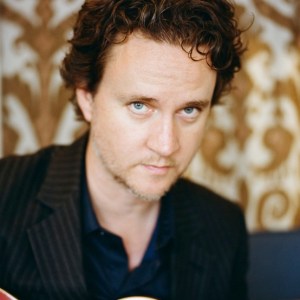Videos by American Songwriter
(PHOTO: Jo McCaughey)
A self-described “studio nerd,” Dan Auerbach owns more vintage gear than his studio can comfortably hold. Even so, he makes good use of it all, playing five different electric guitars on El Camino and keeping every one of his keyboards – from the Mellotron to the Orchestron to the Farfisa organ – wired into the recording console. One flick of a button and the instruments are ready to record.
“That’s the console we used for the album,” he says, pointing to the old Quad Eight that occupies most of the wall between the production booth and the live room. “It was first installed in 1969 at Creative Workshop, which is a classic studio here in Nashville. In 1976 or something, they sold it to some guy in North Carolina. I didn’t know all of that history when I bought it off the Carolina guy, but it turns out it was originally housed just a few blocks from here.”
Hanging on a wall behind the console is a line of vintage guitars. Auerbach’s favorite, a 1950s Harmony Stratotone, can be seen on the back cover of The Big Come Up and heard throughout El Camino. “I’ve had it since before our first record – since before we were the Black Keys, even. It has a humongous neck, like a baseball bat. The DeArmond pickups were made in Toledo, Ohio. The guitar just sounds awesome.”
Songs like “Sister” also use some acoustic guitar, which Auerbach tracked on his favorite Martin. “My uncles have always played Martins,” he explains. “They’re all bluegrass guys. So when I think of an acoustic guitar, I always think of a Martin, like a D-18 or a D-28.”
In the live room, tucked between a grand piano and a dismantled drum set, is a speaker from Muscle Shoals Sound Studios. “I finally talked the guy into selling it to me on the last day we recorded Brothers there. We had just enough room in the van to take it with us. When we recorded the new album, we’d listen to playback on this speaker. That’s what they’d do at Muscle Shoals, too; they wouldn’t go into the control room because it was so tiny. All the musicians would just stay in the live room and they’d pump the sound out, so you could listen without having to get up.”
Even the bathroom, which has a microphone snaking its way out of the wall, was used for recording. “This is our echo chamber,” Auerbach explains, snapping his fingers to show off the roomy acoustics. “We’d run sound from the control room into here, and then we’d pick it up in the microphone. We recorded vocals and handclaps in here. We’re just making use of all the room we have.”




3 Comments
Leave a Reply